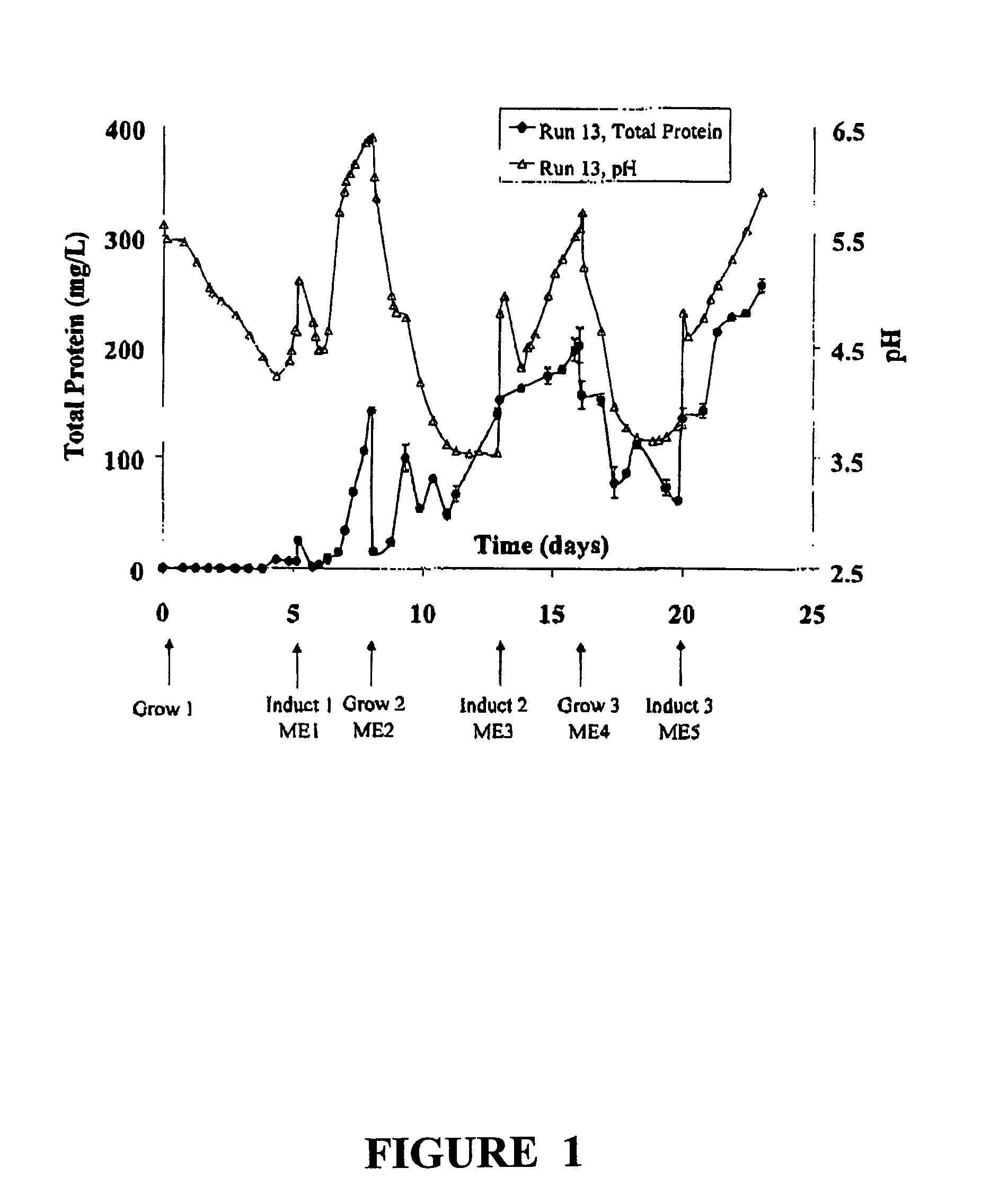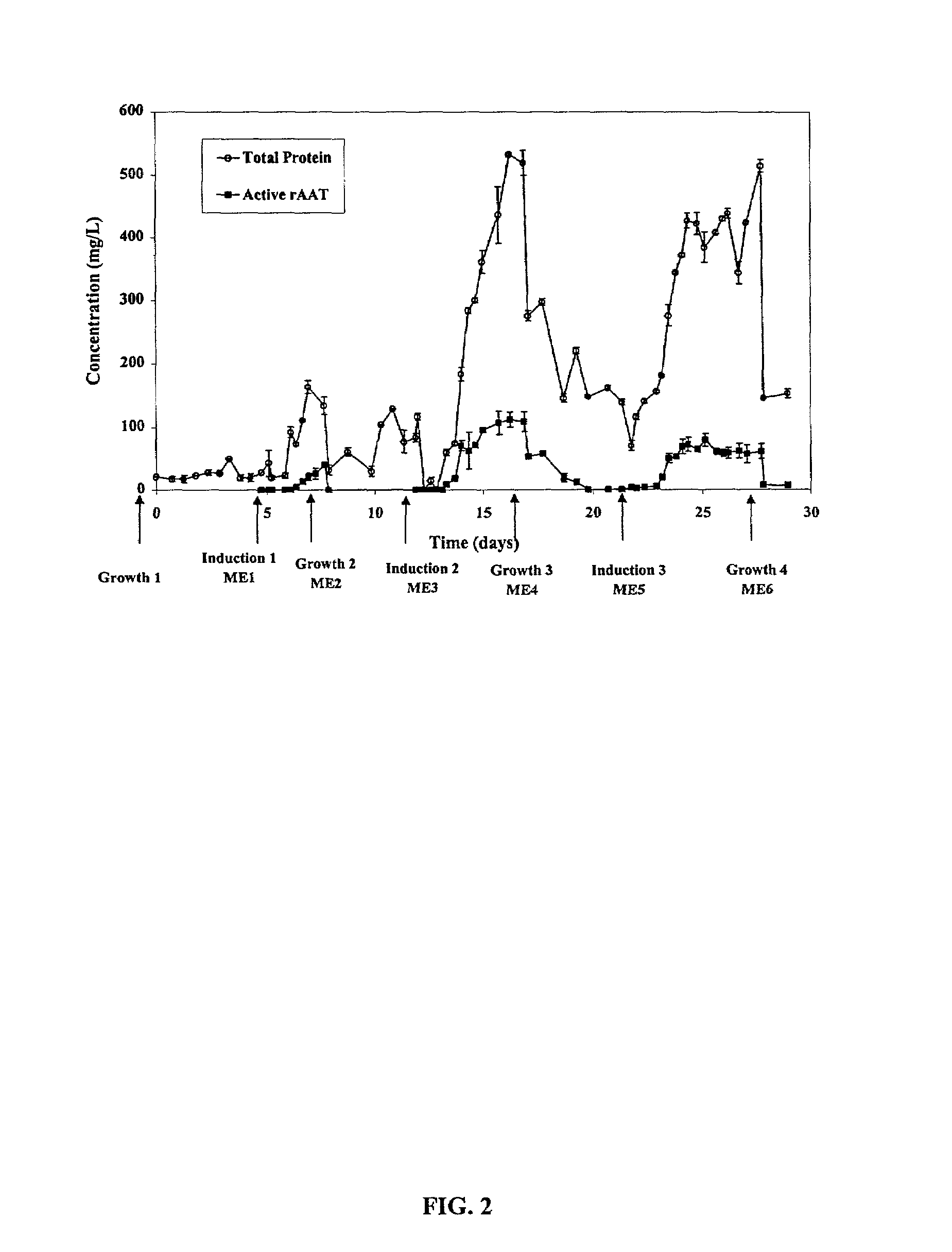Process for scaled-up production of recombinant proteins using transgenic plant suspension cultures
a technology of transgenic plant and recombinant proteins, which is applied in the field of scaled-up production of recombinant proteins using transgenic plant suspension cultures, can solve the problems of slow growth rate of plant cells, inability to evaluate the effects of revitalizing and reusing plant cells for subsequent growth and expression phases, and traditional batch culture is not well suited to the use of inducible promoters, so as to enhance growth and viability of cells
- Summary
- Abstract
- Description
- Claims
- Application Information
AI Technical Summary
Benefits of technology
Problems solved by technology
Method used
Image
Examples
Embodiment Construction
I. Introduction
[0022]The present invention is based on observations made during semi-continuous culture of rice cells to produce recombinant human α-1-antitrypsin (rAAT) under the control of an inducible promoter. The promoter, RAmy 3D, is activated during growth in sugar free media and cells were cultured in a medium with sucrose to promote growth, followed by growth in a medium without nutritive sugar in order to induce production of protein. After production of protein, sugar free medium containing the protein product was removed and exchanged for medium with sugar to restart cell growth. This cycle can be continued indefinitely.
[0023]As explained below, when cells produce heterologous protein, the pH of the media rises as expressed protein levels increase. pH measurement is thus conveniently used as an indicator of protein production and as an indicator of when the heterologous protein can be harvested or when media can most optimally be exchanged back to growth medium if an ind...
PUM
| Property | Measurement | Unit |
|---|---|---|
| pH | aaaaa | aaaaa |
| density | aaaaa | aaaaa |
| pore retention size | aaaaa | aaaaa |
Abstract
Description
Claims
Application Information
 Login to View More
Login to View More - R&D
- Intellectual Property
- Life Sciences
- Materials
- Tech Scout
- Unparalleled Data Quality
- Higher Quality Content
- 60% Fewer Hallucinations
Browse by: Latest US Patents, China's latest patents, Technical Efficacy Thesaurus, Application Domain, Technology Topic, Popular Technical Reports.
© 2025 PatSnap. All rights reserved.Legal|Privacy policy|Modern Slavery Act Transparency Statement|Sitemap|About US| Contact US: help@patsnap.com



